Confidence. That was the message I took away from the Honda HR-V media test drive event recently held in Langkawi.
Popularity breeds confidence. In four months, Honda Malaysia has racked up 15,000 bookings of the crossover, which has a waiting period of four to six months if you want one today. But the company wasn’t just touting numbers; everything radiated confidence, from Honda Malaysia’s choice of rival SUVs for the HR-V and their presence at the event, down to the mood of company personnel.
What’s behind the confidence? Real ability or pumped-up hype? We drive the HR-V on local roads for the first time to find out.
The Sport Utility Vehicle market is booming, and growth is not confined to a particular SUV size or region. It’s not just in Malaysia that more and more carbuyers are opting for the high-riding hatchbacks over traditional shapes – we’re looking at a global wave. Reasons vary, but here at least, the SUV is loved by ladies, who either buy the cars themselves or have a big say in the choice of family car.
The higher ride height and larger size/tough outlook of these cars are main draws, but the supermini-based B-segment SUV adds affordability to the equation, bringing the SUV entry point down to meet buyers shopping in the compact family car class.
The HR-V is priced from RM99k to RM118k, compared to RM93k to RM104k for the Ford EcoSport and RM120k for the Peugeot 2008, cars that are technical rivals of the Honda. It’s priced close to smaller C-segment SUVs like the Mitsubishi ASX (RM115k for 2WD, RM129k for 4WD), Kia Sportage (RM138k) and Hyundai Tucson (RM116k to RM135k), overlapping some lower spec variants. The popular Mazda CX-5 starts from RM126k.
The latter group cast make up the HR-V’s real-world rivals in Malaysia, not the Ford and Peugeot. The French brand hacked open a new B-SUV trail when it launched the 2008 in January 2014, a path that Ford joined later in the year with the EcoSport.
Early they may have been, but both have struggled to make an impression with mainstream carbuyers, many of which don’t even know of their existence, much less consider one. How many EcoSports and 2008s have you seen on the road?
No machete for Honda, which is bulldozing its way through. Now, the sub 4.3-metre HR-V may be smaller in footprint compared to the Tucson/Sportage and CX-5, and obviously so; but Honda’s packaging expertise has given it a cabin to not only match, but beat them in space and practicality. Also, the choice of equipping the HR-V with the biggest available engine, a 1.8 litre (a 1.5L is sold in Japan and Indonesia), means it’s closer to the class above than the 1.5L Ford and 1.6L Peugeot, power wise.
My boot is bigger than yours; top row L-R: HR-V vs Tucson; bottom rom L-R: HR-V vs SportageBased on the Jazz/City platform, the HR-V has a 2,610 mm wheelbase, 10 mm longer than the sedan’s. Not quite C-segment SUV length, but not an inch is wasted with Honda. The HR-V’s boot holds 437 litres and is expandable to 1,032 litres with the rear seats folded flat, but it’s not just about absolute volume; the shape of the cave matters too, as illustrated by my Nikon above.
Honda brought along the Tucson, Sportage and some random cargo for a demo, and the HR-V’s cabin space advantage is clear to see. Further aiding the Honda’s cause is a low load lip and the multi-folding Ultra Seats that made its name in the Jazz. With a rear bench base that can fold up, the car’s floor-to-ceiling height can be maximised and tall items can be ferried upright. It’s all very simple to operate, too.
For human cargo, there’s adequate headroom at the back for regular sized adults, although the Jazz’s airy and spacious feel is not to be found here, while legroom isn’t as generous as the City’s. Big brother CR-V and Nissan X-Trail aside, mid-size SUVs aren’t really known for rear passenger space, so we doubt that many will be complaining.
Honda makes some coupe noises about the HR-V and despite them penning in a mildly sloping roofline and Alfa 147-style hidden rear door handles, we can’t quite see the coupe connection. Not the most visually arresting thing on the road, but as the figures show, a safe and inoffensive design is what the masses want. Those yearning for something edgier would have already looked up the soon-to-arrive Mazda CX-3.
For this writer, it’s inside that the coupe flavour is stronger. The HR-V’s driving position is good; not too upright and although one is perched higher than in a Jazz, the shallow glass area and high centre console gives the impression of a sporty car, and this comes from a guy who drives an actual Honda coupe. A high front seat divider can detract from comfort (Peugeot 3008 comes to mind), but there are no such issues here.
The boxed-in cockpit feel works well with the minimalist dashboard design, which in our range-topping Grade V test car is further simplified with touch screen head unit and air con controls. The effect is less strong with the lower spec radio and manual AC panel, but the clean centre console with electronic parking brake is standard across the board. The centre stack is angled towards the driver.
Another unique design cue is the placement of a long strip of air vent on the passenger side in place of regular double central vents, an arrangement that’s not too dissimilar to the Honda CR-Z’s layout. Not a problem for selfish single drivers like myself in a car not designed for rear passengers, but backbenchers used to having direct blasts of cold air might complain.
The cabin design is pleasing, but Honda has also worked hard to impress in cabin quality. Attention has been paid to areas within sight and reach – the soft touch dash panel facing the occupants, centre console sides and cushy padded material on the door cards all feature stitching; while thin chrome borders on the air con vents and steering buttons add a subtle touch of class.
The materials, coupled with the fresh dash design, gives the HR-V cabin a special feel that’s intangible, but important. It’s also a clear upgrade from the City and Jazz, further strengthening the HR-V’s positioning as a standalone model as opposed to being a “Jazz SUV”. That also sets it apart from the EcoSport and 2008, which between them leave plenty of clues leading to their origins.
The HR-V’s cabin design may be unconventional, but it won’t take a long drive before the familiar Honda vibes creep in. Mass-market modern Honda, we must add, before your R-rated mind starts wandering off to big VTECs and red badges.
Not the most communicative, but the steering is light and easy, which it should be in such a car. The HR-V is agile enough when you find some switchbacks to test its footwork, and grip from the touring Bridgestones are decent (we drove it in the rain, too) despite their squeal-happy nature. The latter would be a pretty effective natural warning for Mr Joe Regular (or Ms Jen Regular in this case) to tone it down, but the HR-V’s dynamic reserves should comfortably outlast the bravery of its target drivers.
Never mind the handling; what stood out more was the HR-V’s ride comfort, which did both body control and bump absorption well. Granted, Langkawi’s roads are in much better shape than Klang Valley’s warzone-like tarmac, but Honda Malaysia’s decision to opt for modest 16-inch alloys seems to be an inspired one. The HR-V also avoids being too softly sprung, a good comfort intention that works if roads are smooth and even.
Working in conjunction with the fluent drive and ride is the HR-V’s good refinement. Just like with the impressive current Jazz, the low NVH levels will surprise one who’s stepping in from a previous-generation Honda. A significant part of that is due to the CVT gearbox.
The stepless automatic didn’t have the best start in life. In fact, it was Honda who tried to popularise the CVT with the City back in 2003, and that mixed impression (downright bad for enthusiasts) has stuck to the transmission like a leech. After reverting to torque converter automatics, Honda is now back with a second attempt, and like the latest CVTs from Nissan and Toyota, it’s good.
Smooth and responsive, the HR-V’s transmission could be palmed off as a regular auto ‘box and I’d wager that many showroom test drivers wouldn’t notice. A slightly too excitable throttle at low revs produces unnecessary vroom vroom for me, but otherwise the CVT works well with the 1.8 litre SOHC i-VTEC four-pot, which 142 PS and 172 Nm endows the SUV with a good turn of speed. With a smaller and lighter body, the 1.8L HR-V has no problems mixing it with the 2.0L gang.
Of the lot – Tucson, Sportage, ASX and CX-5 – only the Mazda feels more sporting to drive, with a racier engine note, snappy gearbox response and the best steering of the group. The ASX is let down by poor refinement and cumbersome steering. The Hyundai-Kia sisters? Well, they’re stylish options. Not much of a contest with the EcoSport and 2008, and we shall leave it at that.
Of late, the phrase “game changer” has been thrown around rather freely, but Honda has truly changed the SUV game with HR-V, the confident small guy punching above its weight.
Looking to sell your car? Sell it with Carro.

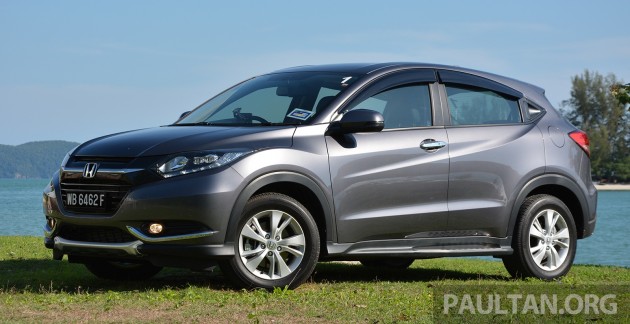
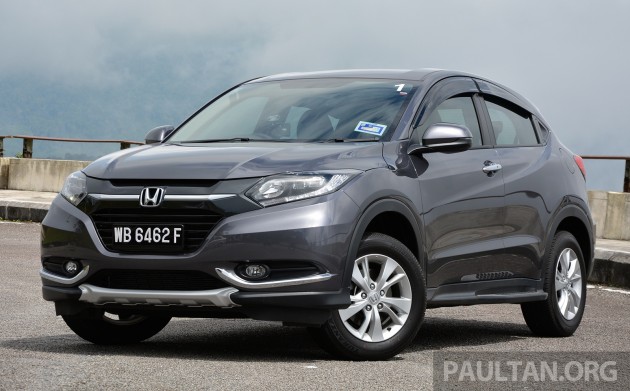
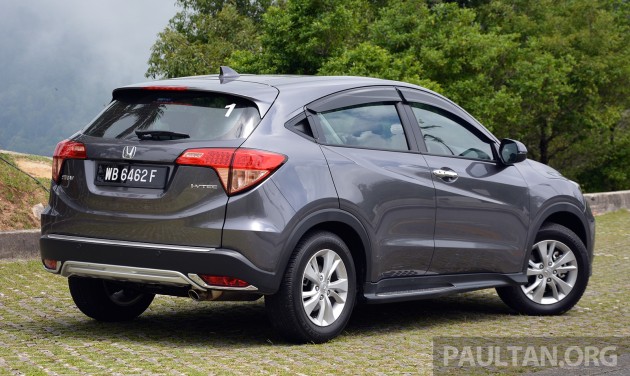












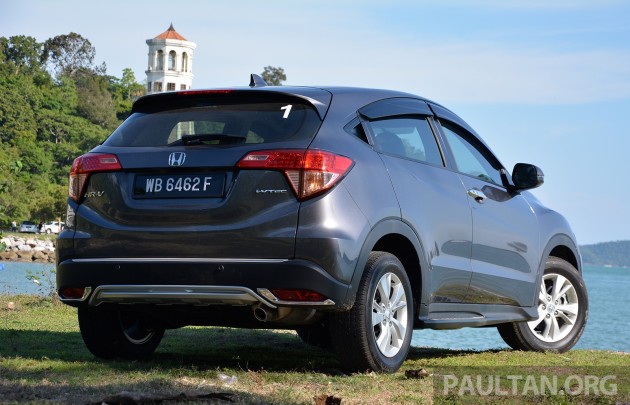
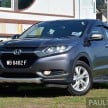
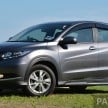
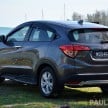
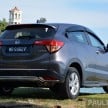

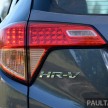

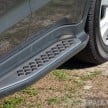
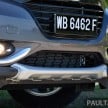
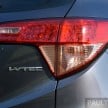
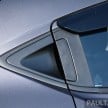
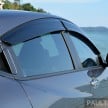
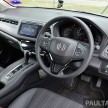
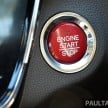
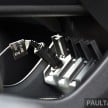
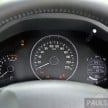
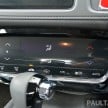
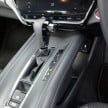
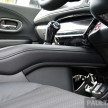
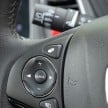
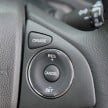
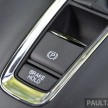
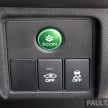
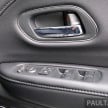
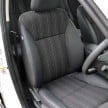
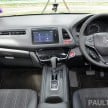
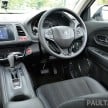
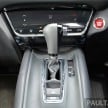
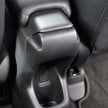
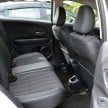

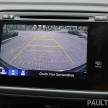
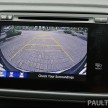
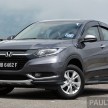
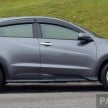
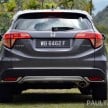
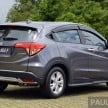
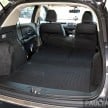
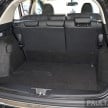

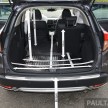
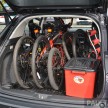
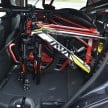
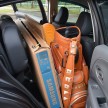




















AI-generated Summary ✨
The comments on "DRIVEN: Honda HR-V punches above its weight" reveal strong opinions, mainly positive about the HR-V's design, space, and safety features like VSC, which many argue gives it better value and resale prospects compared to competitors like Toyota Vios and Altis, often criticized for lacking safety features in Malaysia. Several comments praise its interior space, handling, and overall package, calling it a game changer, especially for its price point around RM98K. However, some express disappointment over certain safety features missing in other brands, with a focus on the importance of VSC. Critics also compare it favorably against other SUVs and vehicles like Subaru XV and Mazda CX-3. Overall, the sentiment is highly supportive, highlighting the HR-V’s safety, value, and market dominance in Malaysia.